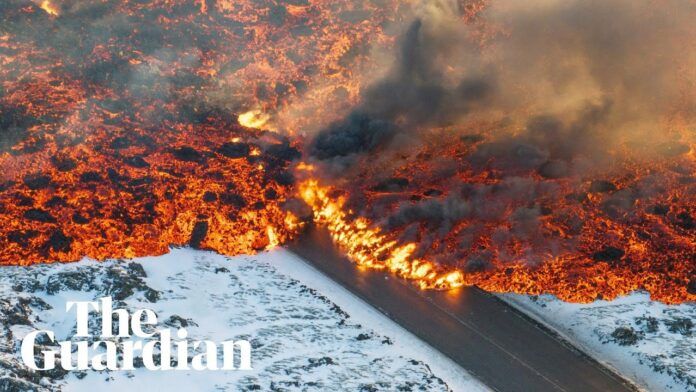Popular geothermal spa and the nearby town of Grindavík evacuated due to seismic activity
Iceland has initiated the evacuation of the renowned Blue Lagoon and the nearby town of Grindavík in response to escalating seismic activity indicating an imminent volcanic eruption, as reported by the country’s public broadcaster RÚV. The geothermal spa, celebrated for its warm, milky-blue waters and attracting tourists worldwide, now faces a temporary closure due to the geological threat.
Volcanologist Thorvaldur Thordarson, speaking to RÚV, highlighted the seriousness of the situation, noting that magma has started to flow approximately four kilometres (2.5 miles) below the surface. This depth suggests that an eruption could occur within a matter of hours, prompting immediate precautionary measures.
The evacuation process, according to local police, has been proceeding smoothly. Grindavík, the town nearest to the Blue Lagoon, has seen a successful and orderly evacuation, with only a few residents present in the area over the past few days.
In light of the increased seismic activity, the Blue Lagoon announced on its website that it would halt operations through at least Sunday, with plans to reassess the situation thereafter. The facility has committed to adhering closely to the guidance and recommendations provided by authorities, ensuring the safety of both visitors and staff during this period of geological uncertainty.
The Blue Lagoon is situated less than an hour’s drive from Reykjavík, Iceland’s capital, on the Reykjanes Peninsula. This region is not only home to the spa and Keflavík International Airport, Iceland’s main international gateway, but is also recognized as one of the most volcanically active areas on Earth. The peninsula is characterized by a rift valley, extensive lava fields, and volcanic cones, underscoring the dynamic and often unpredictable nature of Iceland’s landscape.
This recent development follows a similar closure of the Blue Lagoon in November, after the area experienced over 1,400 earthquakes within a 24-hour period. The ongoing seismic activity serves as a reminder of the inherent risks associated with residing and visiting one of the planet’s most volcanically active regions. As the situation unfolds, authorities continue to monitor developments closely, prioritizing public safety amidst the potential for natural disaster.
